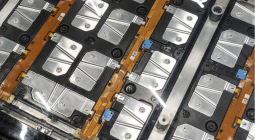Batteries Save the Day After Norway-UK Power Link Fails
Battery energy storage systems, a hallmark of low-emission energy development, “casually kept the lights on” in the United Kingdom during a major disruption in power imports from Norway this month.
On October 8, Norway’s power exports to the UK through the North Sea Link suddenly dropped from 1.4 gigawatts to zero, causing a sharp dip in the UK grid’s frequency and threatening widespread disruptions. Within two minutes, battery energy storage systems (BESS) responded to stabilize the grid and avert the crisis, reports Solar Power Portal.
Grid frequency, measured in Hertz (Hz), indicates how often the alternating current (AC) changes direction in the power grid. It depends on the balance between electricity supply and demand. If supply is too low relative to demand, the frequency drops; if supply exceeds demand, the frequency rises.
Maintaining this balance is crucial because frequency swings can lead to power disruptions, equipment damage, or blackouts. To correct for that risk, grid operators make real-time adjustments, aiming to keep frequency within a tight range of 49.8 to 50.2 Hz around the UK’s standard 50 Hz. Energy storage helps maintain that balance, especially when drawing from intermittent sources like solar and wind, explains engineering.com.
The sudden halt in Norway’s electricity exports saw the UK grid frequency plummet to 49.59 Hz in just two seconds, posing a threat to the system. But the UK energy operator was able to rely on fast-acting frequency services and draw 1.5 gigawatts of power from BESS systems, Roger Hollies, technology chief at Arenko Group, wrote in a LinkedIn post.
“It’s exciting to see batteries casually keeping the lights on whilst delivering diversity of activity to maximize revenue,” Hollies wrote.
A BESS is the best resource to respond quickly to interconnector disruptions, which are not uncommon, Charlotte Johnson, global director of markets at Kraken, told Solar Power Portal.
Lithium-ion BESS in particular are key assets “because of their fast responding nature and their ability to serve two key purposes; first their speedy response, and second, the reserve actions which occur after a few minutes,” Johnson added.
Such battery systems have proven themselves before. In late September, the Kelwin Battery project in Ireland was able to export power within seconds to maintain grid frequency after the Moyle interconnector tripped while transmitting 442 megawatts from Great Britain.
“This event was a real-life example of how Statkraft’s innovative projects in Great Britain and Ireland are playing a vital role in keeping the networks on both sides of the Irish Sea stable, preventing supply disruption to consumers,” said Statkraft, the European renewable power generator behind the Kelwin project.
“As we move towards a zero-carbon electricity network we need a full system approach, with technologies like these an essential part of the infrastructure.”
Cover photo: code 83/pixabay





